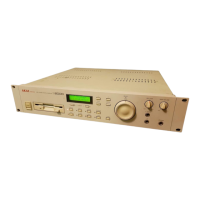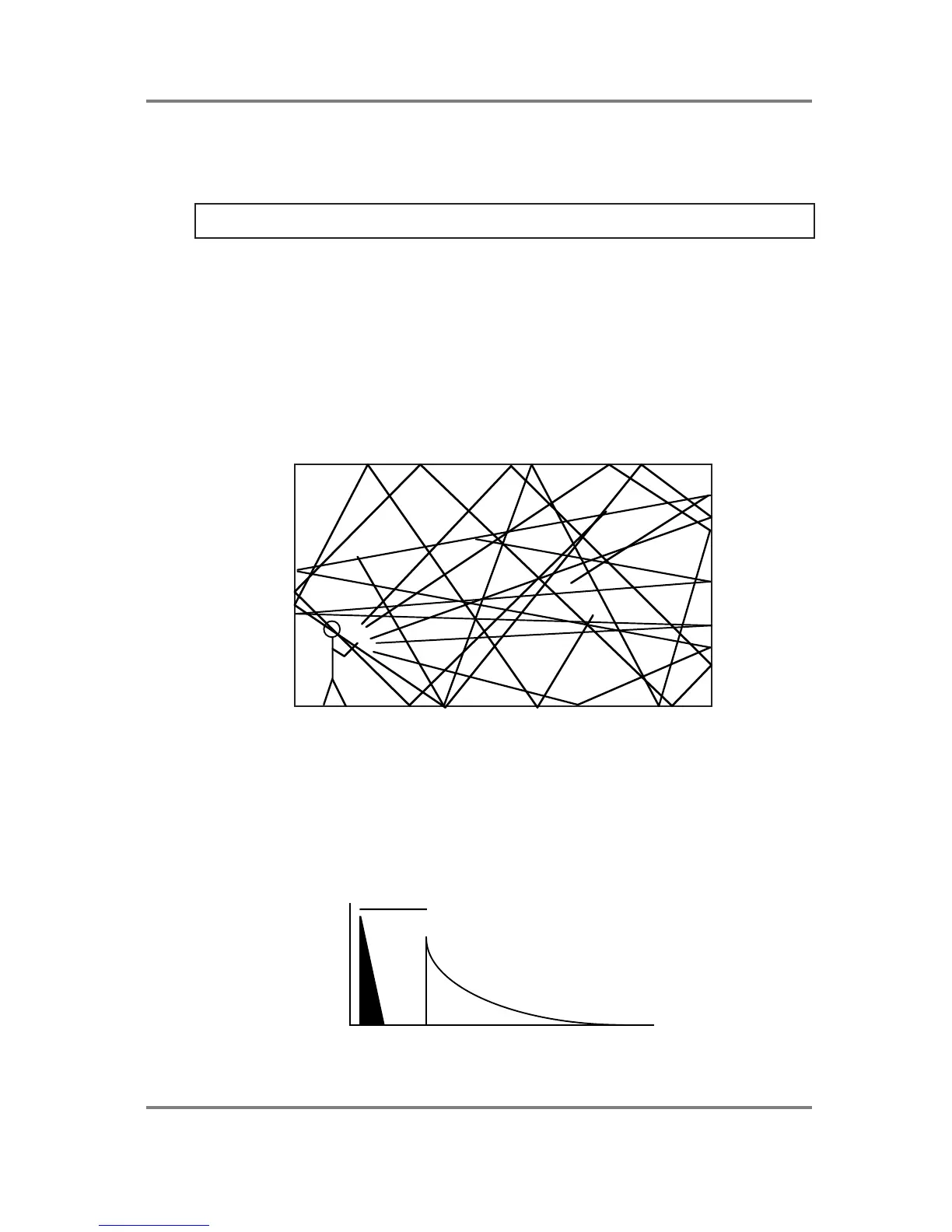EFFECTS EDIT
Page 188 S2000 Operator’s Manual - Version 1.30
REVERB EFFECTS
Besides all the effects described so far, the EB16 also has a reverb effect which can be used
together with those already described.
NOTE: The multi effects described above relate only to the multi-effects channels FX1 and
FX2. They are not available on effects channels RV3 and RV4 which are reverb only.
Reverb is a delay effect we experience almost everyday. Whether we are in a bathroom or a
cathedral, most acoustic environments have some form of reverberant characteristic. It is
probably THE most important effect and has the most pronounced effect (no pun intended) on
our perception of a sound largely because we are so used to hearing it all around us every day.
This is why a sound with reverb (even if it is just the smallest hint) sounds better and more ‘alive’
and realistic than a ‘dry’ sound with no reverb.
If you imagine you are in a large hall and you clap your hands, the sound travels outwards to the
walls and bounces off them. Of course, it takes a certain time for the sound to get to the walls
and then travel back to your ears - this is called the PRE-DELAY time. Because the reflections
are bouncing off the walls at many different angles, the effect is that you hear the familiar
reverberant ‘smudge’ or ring after the initial sound:
In this example, we can only see the one elevation but the sound will also be bouncing off the
side walls as well as the walls behind you to build up a dense reverberation pattern.
Characteristics of the room determine the sound of the reverberation. For example, a large
room or hall will give a long reverberant decay but, the same room or hall filled with wall-to-wall
velvet drapes will give a shorter, duller reverberation as the drapes absorb all the high
frequencies. In a small tiled room, you can get quite a pleasing short reverb (which is why so
many people sing in the bath!) where the highly reflective tiled surfaces cause the sound to
bounce around and build up a dense reverberation quite quickly. Graphically, reverb ‘looks’ a
bit like this:
PRE-DELAY
DECAY TIME
SOUND REVERBERATION

